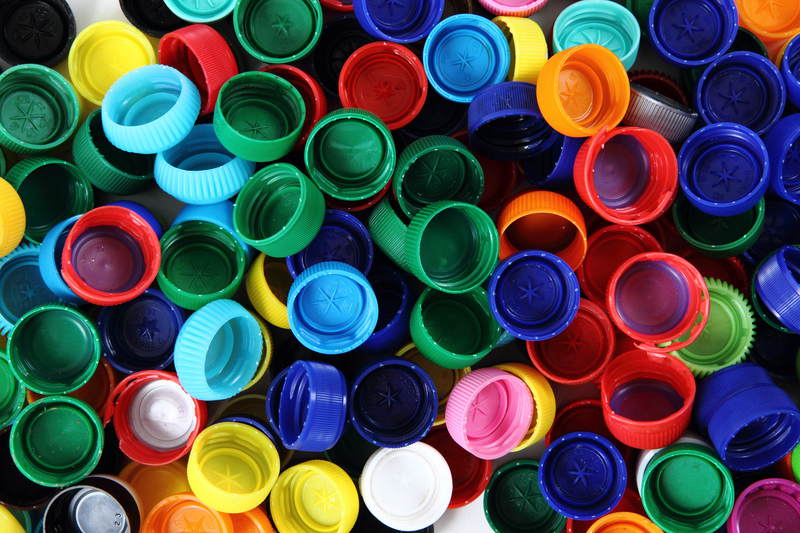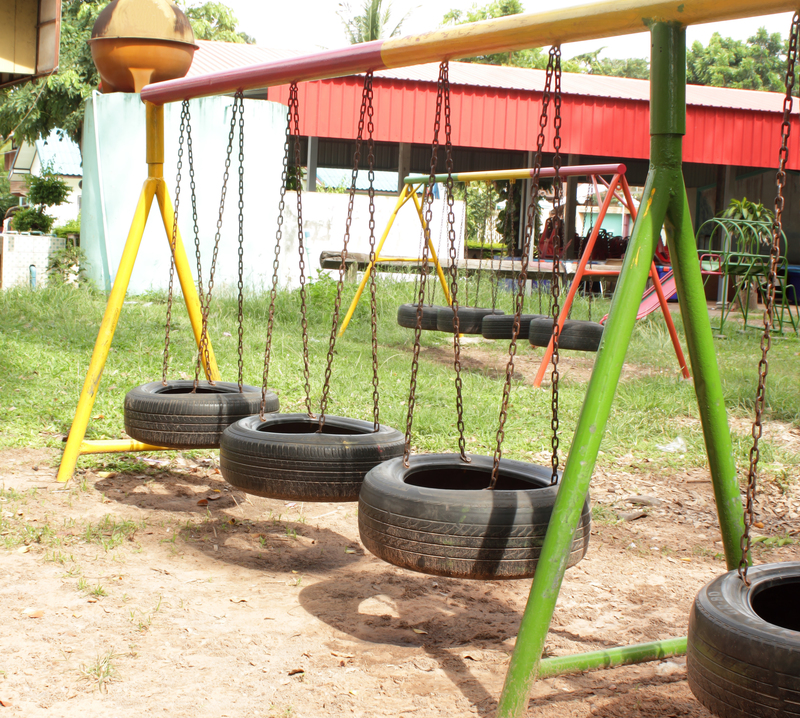Giving Used PPE the Proper Send-Off with Safe Disposal
The need for personal protective equipment (PPE) has never been more apparent than during recent global events. Whether in healthcare settings, industrial environments, or during public health emergencies, PPE like masks, gloves, gowns, and face shields safeguard users from contaminants and hazards. However, once used, these protective barriers turn into potential hazards themselves unless they are disposed of safely. Proper PPE disposal is not just a matter of cleanliness - it's a crucial step in protecting public health, reducing environmental impact, and promoting workplace safety. This comprehensive guide will help you understand the importance of safe PPE disposal, best practices, regulations, and innovative solutions for giving used PPE the send-off it truly deserves.

Why Is Proper PPE Disposal Vital?
Used PPE items are not ordinary waste. After use, they might be contaminated with pathogens, chemicals, or hazardous materials, posing a risk to sanitation workers, the public, and the environment. Improper disposal can turn protective gear into sources of infection or pollution.
Key Reasons for Safe Disposal of Used PPE
- Preventing disease transmission: Discarded gloves, masks, and other PPE can harbor viruses or bacteria, potentially spreading illnesses if left uncontained.
- Protecting waste management workers: Sanitation staff risk exposure to contaminants if PPE isn't separated and handled appropriately.
- Environmental stewardship: Many PPE materials are single-use plastics or synthetic fibers that can harm wildlife and ecosystems if they enter landfills or waterways.
- Compliance with regulations: Strict rules govern the disposal of hazardous waste, including used personal protective equipment in certain industries. Violations can result in fines and legal action.
Understanding the Types of PPE and Their Disposal Needs
Not all personal protective equipment is created equal. Knowing the composition and intended use of PPE informs the correct disposal method.
Common Types of PPE
- Masks: Includes surgical masks, N95 respirators, cloth face coverings.
- Gloves: Latex, nitrile, vinyl, and rubber varieties.
- Gowns and Aprons: Disposable or reusable synthetic and cotton fabrics.
- Face Shields and Goggles: Usually made of polycarbonate or similar plastics.
- Shoe Covers, Caps, and Respirators: Often seen in healthcare and industrial settings.
Hazardous vs Non-Hazardous PPE Waste
- Hazardous Waste: PPE used in handling infectious materials, chemicals, or in healthcare is typically classified as hazardous and must follow strict disposal protocols.
- General Waste: Non-contaminated or public-use PPE (such as masks from the general population) may be disposed of as municipal solid waste, but there are still best practices to reduce environmental burden.
Safe Disposal Methods for Used PPE
The ideal send-off for used PPE depends on its classification. Let's break down the best practices for both hazardous and non-hazardous protective equipment.
Disposal of Hazardous PPE
- Segregation: Separate used PPE from other waste at the point of use. Dedicated bins, clearly labeled and color-coded, help prevent accidental mixing.
- Containment: Place contaminated PPE in leak-proof, puncture-resistant bags or containers. Seal bags tightly and avoid overfilling.
- Labeling: Mark containers with biohazard warnings or chemical hazard labels if applicable.
- Specialized Disposal: Work with certified hazardous waste disposal services to ensure incineration or chemical decontamination, as required by law.
- Training: Educate staff on safe handling procedures and incident reporting protocols in case of exposure.
Disposing of Non-Hazardous PPE
- Place items such as masks and gloves in a sealed bag before disposing in general waste.
- Never discard used PPE with recyclables or compostables - most are not recyclable due to contamination risks and material composition.
- If available, use designated PPE waste bins in workplaces, transit stations, and public spaces.
- Some cities offer specific collection programs during pandemics or disease outbreaks - utilize these services.
Environmental Concerns and Sustainable Solutions
The surge in global PPE usage has led to a parallel increase in plastic and synthetic waste. Massive quantities of masks, gloves, and gowns now litter landfills and marine environments. A responsible send-off for used PPE isn't just about safety--it's also crucial for sustainability.
Challenges of Conventional PPE Waste Disposal
- Non-biodegradable materials: Most disposable PPE, like N95 respirators and synthetic gloves, can take hundreds of years to degrade.
- Microplastics: Improperly discarded PPE breaks down into tiny plastic fragments, threatening aquatic life and entering food chains.
- Incineration: While incineration is common for hazardous PPE, it can emit toxic pollutants if not done properly.
Innovative Approaches to PPE Waste Management
- Recycling Programs: Some companies now collect used PPE and process them into new plastic products, paving materials, or even energy sources. Check if local initiatives exist in your area.
- Biodegradable PPE: Researchers are developing masks and gloves from plant-based polymers. These decompose safely, reducing ecological footprints.
- Reusables: Whenever possible, opt for reusable PPE that can be laundered and sanitized, dramatically cutting waste.
- Public Awareness Campaigns: Education on proper disposal and environmental risks encourages responsible behavior.
Regulations Governing PPE Disposal
Legislation on the disposal of used personal protective equipment varies by region and sector. For businesses and healthcare providers, compliance is not optional.
Standards and Guidelines
- OSHA (Occupational Safety and Health Administration): Instructs that potentially infectious PPE must be treated as regulated waste.
- EPA (Environmental Protection Agency): Enforces guidelines for hazardous material disposal, including chemicals and contaminated gear.
- CDC (Centers for Disease Control and Prevention): Offers protocols for healthcare facilities to prevent nosocomial infections via contaminated PPE.
- Local and state regulations: Always consult city or state waste management authorities for current policies, especially during outbreaks or chemical exposures.
Best Practices for Regulatory Compliance
- Implement written policies and employee training for PPE use and disposal.
- Maintain detailed logs of hazardous waste shipments and disposal certificates.
- Regularly audit disposal procedures to identify and correct lapses.
PPE Disposal in Different Settings
Healthcare Facilities
- Follow strict infection control protocols for used gloves, masks, gowns, and face shields.
- Utilize biohazard bags, sharp-resistant containers for contaminated sharps, and licensed medical waste handlers.
- Regularly train staff in PPE removal ("doffing") to minimize self-contamination.
Workplaces and Offices
- Designate PPE disposal areas close to exit points or in restrooms.
- For businesses handling chemicals or hazardous dust, ensure disposal bins comply with OSHA/EPA rules.
Schools and Public Spaces
- Install marked bins for masks and gloves; post clear signage.
- Schedule regular, safe removal of PPE waste for municipal collection.
Community and Household PPE Disposal
- Seal used masks and gloves in a bag before discarding in trash bins.
- Wash hands thoroughly after handling used PPE.
- Do not flush PPE items down toilets or drains.
Proper Send-Off: Step-by-Step Guide for PPE Disposal
- Remove PPE Carefully: Follow the recommended doffing procedure to avoid skin contact with outer surfaces.
- Place in Designated Bins: Use either hazardous waste containers (for contaminated PPE) or sealed trash bags (for non-hazardous PPE).
- Seal and Label: Secure containers and label them if they contain infectious material.
- Arrange for Safe Collection: Use authorized waste contractors for hazardous PPE or follow municipal disposal schedules for household items.
- Practice Hand Hygiene: Always wash hands after handling and disposing of PPE.
Myths and Misconceptions about PPE Disposal
- Myth: All PPE can go into the recycling bin.
Fact: Most used PPE cannot be recycled due to contamination and mixed materials; check local guidelines before attempting recycling. - Myth: Burning used PPE in a backyard incinerator is safe.
Fact: Illegal in many regions and can release harmful toxins; only approved facilities should incinerate hazardous PPE. - Myth: Flushing masks or gloves down toilets is acceptable.
Fact: Causes major sewage blockages and contributes to marine pollution; always dispose of via solid waste routes.
Role of Education in PPE Waste Management
Building a culture of safe and sustainable PPE disposal starts with awareness. Employers, community leaders, and public agencies must proactively educate staff and the general public about:
- The dangers of improper PPE waste handling
- Environmental impacts of PPE pollution
- Correct disposal procedures and available resources
- Opportunities for sustainable PPE solutions
By fostering knowledge and responsibility, we can collectively reduce risk and environmental harm.

The Future of PPE Disposal: Moving Towards Zero Waste
As the world adapts to new norms of hygiene and occupational safety, innovations in PPE waste management are gaining ground. From biodegradable gear to closed-loop recycling and smart collection bins, the future is promising.
- Green materials: Advances in compostable and rapidly degrading PPE are poised to revolutionize the industry.
- Reverse vending machines: These automated systems collect used masks and gloves for recycling while providing incentives.
- Producer responsibility: Encouraging manufacturers to design PPE with end-of-life management in mind.
By investing in these solutions and embracing rigorous safe PPE send-off practices, we ensure a healthier, safer, and more sustainable future.
Conclusion: Our Shared Duty for Safe PPE Disposal
Whether you're a healthcare professional, frontline worker, business owner, or simply a concerned citizen, each of us plays a crucial role in giving used PPE the proper send-off. Adhering to safe disposal protocols, respecting environmental imperatives, and staying informed about new innovations ensures not just personal safety but the well-being of our communities and planet.
Let's commit to responsible PPE usage and disposal - because safeguarding against today's hazards shouldn't create tomorrow's crises.
- Always separate and safely contain used PPE.
- Follow local, regional, and industry-specific regulations.
- Promote education and sustainable solutions.
The journey doesn't end with putting on protective equipment; it ends with ensuring that it is safely and sustainably sent off. Let's make it count.